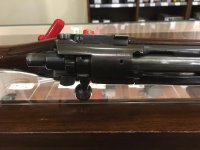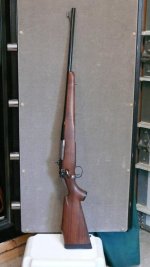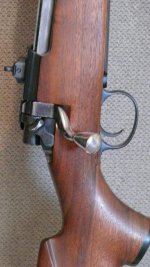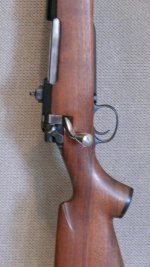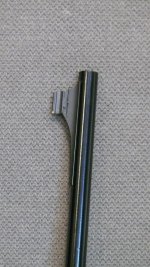$400 will almost get you an unaltered 1917 around here if you look long enough. They are steadily going up in price but I am still seeing sporterized examples routinely sell for between two to three hundred dollars, usually with scope mounted.
Have a Winchester 1917 that has been in the family for over 60 years now. My grandfather acquired it shortly after WW II and the story about how he got it is interesting. I know I've posted about it before but here goes again.
My fathers dad, Bertil Larson, was the chief clerk for the north central Pennsylvania division of the New York Central rail road. As such he frequently traveled by rail throughout the area. Sometime in the late forties or early fifties he was approached by the local American Legion post to see if he could fetch them some military surplus rifles from an amory in Harrisburg, Pa. They were intended for use with the Post's color guard. Bertil made some calls and found that the rifles, all 30-06 bolt action guns, were available to all comers for around 10 or 11 dollars. He "took some orders" from friends and coworkers and ended up bringing back an entire case of rifles, which turned out to be all 1917 Enfield actions. Bertil kept one for himself and trimmed it down for hunting.
It's had a long and success career. This is him with a nice 12 point taken circa 1952. Stock was cut down, but the sights were original.

Bertil died the next year and dad took ownership. He had additional modifications made to the barrel and receiver, an installed an inexpensive 4x Dickenson scope in the late fifties. It continued to drop deer like clockwork over the next fifty years with no additional modifications. When dad passed on my brother used it to take this nice 10 point:

Since then the old Dickenson scope fogged up and died and I ended up with the old gun. I've put a Lyman 57 receiver sight on it and plan to put a Boyds replacement stock on it. The original is developing a few cracks.
Yes... its a bubba'd military long arm that they quit making long ago. But they did make hundreds of thousands of them and besides, 60 years ago the average worker didn't have a lot to spend on sporting goods. I'd say the old old boy is still earning a return on Bertil's original investment.
John


